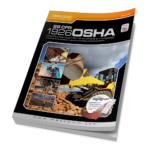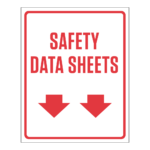This post was originally published in February 2018 and has been updated in April 2022 for accuracy.
Another SDS ‘Headache’
If you are supplying chemical products that require Safety Data Sheets (SDS’s) to multiple countries, you are also likely to know this headache well.
With the implementation of the Globally Harmonized System of Classification & Labeling (GHS) around the world progressing, issues are beginning to appear which emphasize points where…. Maybe requirements are not so ‘harmonized’. One such issue, is ingredient disclosure requirements on SDS’s for mixtures across different regions of the world.
The United Nation’s (UN’s) GHS system, does contain some standardized recommendations for SDS, including that SDS’s should be provided only for chemicals classified as ‘hazardous’, SDS’s should contain basic minimum information (e.g., 16 sections with specific headings), as well as more detailed recommended guidance on how to prepare each section of the SDS.
Ingredient disclosure recommendations, in particular, appear in Annex 4 of the GHS. In general, the GHS recommends that for a mixture classified as hazardous, the SDS should list all ‘hazardous’ ingredients, which are individually hazardous to health or the environment, when the ingredients are present above concentration cutoff levels. There’s several parts of that general requirement, which can be viewed as a ‘can of worms’.
Are the cutoff levels the same for each region of the world? How should one handle ingredient disclosure when you are in a region that doesn’t regulate environmental hazards on SDS’s? Are ‘non-hazardous’ chemical mixtures really not required to have an SDS?
The United States, Canada, and Europe – Where they Differ
The European Union (EU)
In the EU, detailed SDS requirements appear in Annex II to the REACH regulation [Regulation (EC) No. 1907/2006 concerning the Registration, Evaluation, Authorization and Restriction of Chemicals]. The SDS requirements in REACH work closely in conjunction with the EU’s GHS regulation [Regulation (EC) No. 1272/2008 on classification, labelling and packaging of substances and mixtures, or the ‘CLP’].
In comparison to the UN’s GHS general SDS requirements above, the EU’s REACH and CLP requirements, include additional requirements for SDS ingredient disclosure. For mixtures which are classified as ‘hazardous’, ingredients which are hazardous to health or the environment, are required to be disclosed if they are present above a multitude of concentration cutoffs.
Perfect! This requirement ‘basically’ is the same as the UN’s recommendation. Note the comment ‘… a multitude of concentration cutoffs’. REACH has a list of ‘generic’ concentration cutoffs for ingredients, but there are a number of other cutoff requirements in different sections of the CLP regulation to consider as well. These include:
- Generic cutoff concentrations for Acute toxicity, Skin corrosion/irritation, Eye damage/irritation, and aquatic hazards;
- Generic cutoff concentrations for other heath, environmental, or additional EU specific hazards;
- Specified concentration cutoffs for substances in the Annex VI harmonized list of classifications (e.g., the cutoff for Sodium hydroxide is lower than what would be required under the generic cutoffs);
- New specified concentration cutoffs from the CLP’s classification and labeling inventory;
- Specified concentration cutoffs for special hazard classifications in Annex II of the CLP; and
- Additional notes that if an ‘M Factor’ is applicable, concentration cutoffs have to be adjusted for that ‘M Factor’ (i.e., lowered).
Each of those cutoff requirements has to be reviewed, and the lowest concentration of them used, for ingredient disclosure on the SDS. Not such a straightforward requirement.
REACH also requires that ingredients not already included in the group of health or environmental hazards present above concentration cutoffs, be disclosed if there are known Union exposure limits for the chemical, and if the chemical is ≥ 0.1% and persistent, bioaccumulative and toxic (PBT) or very persistent and very bioaccumulative (vPvB) according to criteria laid out in REACH Annex XIII.
REACH and the CLP also require SDS, and includes SDS disclosure requirements, for chemical mixtures that are not classified as hazardous…a requirement that is different from the UN’s GHS recommendation.
The ingredient disclosure requirements for a non-hazardous chemical mixture, include disclosing at ≥ 1%, any ingredient that is a health or environmental hazard above concentration cutoffs, or that has an established Union exposure limit; and disclosing at ≥ 0.1% any PBT or vPvB chemicals.
Canada’s WHMIS 2015 Requirements
In Canada, an SDS is required only for ‘hazardous’ products which are intended for use in workplaces, according to the Hazardous Products Act (HPA) and Hazardous Products Regulations (HPR, or “WHMIS 2015”).
Schedule 1 of the HPR (WHMIS 2015), is where specific GHS SDS requirements are found. Another example of different requirements for different regions. WHMIS 2015 only requires SDS for ‘hazardous’ products, which matches the UN’s GHS recommendation…. while the EU’s REACH and CLP regulation also require SDS for mixtures that are not classified as hazardous.
Again, in comparison to the UN’s GHS general SDS requirements above, WHMIS 2015 requires that for a mixture classified as hazardous, the SDS should list all ‘hazardous’ ingredients, which are classified in any health hazard category or subcategory, when the ingredients are present above concentration cutoff levels. Concentration cutoffs are specified for each Health Hazard category and subcategory in Part 8 of the HPR. This is another example of different requirements for different regions.
WHMIS 2015 only requires ingredients to be disclosed above concentration cutoffs if they have a GHS health hazard classification…while the UN’s GHS recommendation recommends environmentally hazardous ingredients also be disclosed…. And the EU’s REACH and CLP regulation include disclosure requirements for ingredients which may not be hazardous, but have exposure limits, or are PBT/vPvB chemicals.
The US’ OSHA Hazcom 2012 Requirements
In the US, an SDS is required only for ‘hazardous’ products which are intended for use in workplaces, according to the Occupational Safety and Health Administration’s (OSHA) Hazcom 2012 GHS standard (29 CFR Parts 1910, 1915, 1926). Appendix D of Hazcom 2012, is where specific GHS SDS requirements are found. Perfect again! Canada’s WHMIS 2015 and the US Hazcom 2012 standard have the same requirement as the UN’s GHS recommendation…. SDS are required only for ‘hazardous’ products. Unfortunately…this is still an example of different requirements for different regions, since the EU’s REACH and CLP regulation also require SDS for mixtures that are not classified as hazardous.
Again, in comparison to the UN’s GHS general SDS requirements above, Hazcom 2012 requires that, for a mixture classified as hazardous, the SDS should list all ‘hazardous’ ingredients, which are classified in any health hazard category or subcategory, when the ingredients are present above concentration cutoff levels; or which still present a health risk even if present below the concentration cutoff levels. Here we go again…another example of different requirements for different regions.
The US Hazcom standard additionally added a special requirement for chemicals which may actually be below concentration cutoffs. What is not clear about this additional requirement is how to handle ingredients that have known OSHA or ACGIH exposure limits, but which aren’t actually classified in a GHS health hazard class.
Under old OSHA Hazcom requirements, prior to the implementation of GHS, these types of chemicals had to be disclosed. They still are required to be disclosed, even under the updated Hazcom 2012 standard, in certain cases. In an OSHA interpretation letter, available on OSHA’s website, OSHA states that:
Section 3 of Appendix D to HCS 2012 states that if the hazard of an ingredient presents a health risk below the applicable cut-off value, it must listed. It is OSHA’s longstanding position that where a component may be released above an OSHA PEL or the TLV®, it presents a health risk, and must therefore be included on the SDS. Where a component of a product may be released in concentrations that would exceed an OSHA PEL or the TLV® information on these components must be included, regardless of whether their concentration in the product is below the cut-off value.
Now the ‘can of worms’ becomes quite wiggly. The UN’s GHS recommendations match the EU’s CLP and REACH requirements, in that an SDS is required for ‘hazardous’ mixtures, and ingredients which are health or environmental hazards, and above concentration cutoffs, have to be disclosed. The EU, however, added on disclosure requirements for chemicals which may not be ‘hazardous,’ but which have exposure limits or are classified as PBT/vPvB chemicals; and also, may require SDS’s for mixtures which are not hazardous.
Then in Canada and the US, there is a match to the UN’s GHS recommendations, in that an SDS is required for ‘hazardous’ mixtures, but only ingredients which are health hazards must be disclosed above concentration cutoffs. No chemicals which are only classified as environmentally hazardous, need to be disclosed.
The US has then also added a requirement, that ingredients which may be below concentration cutoffs, but which still present a health risk, must also be disclosed. Ai yai yai.
Concentration cutoffs
Reading all of that, one has to remember to think specifically about concentration cutoffs.
Are they the same for each region, since after all, the GHS is GHS, right? Not so. Looking at the US Hazcom 2012 standard and Canada’s WHMIS 2015 requirements, most generic health hazard concentration cutoffs are the same, which means that SDS concentration disclosure requirements are the same (with the exception of that prickly Hazcom 2012 requirement for disclosing chemicals which may still be a health risk even below concentration cutoffs).
A Skin Sensitizer – Category 1B chemical has a classification cutoff of ≥ 1%, for example.
So, a mixture that is ‘hazardous’ would require that Skin Sensitizer – Category 1B material to be disclosed at ≥ 1%. In the EU, however, there are differences in generic cutoff concentrations, and specific concentration cutoffs for some chemicals, as well as ‘M Factors’ to consider.
To use the Skin Sensitizer – Category 1B as an example again, the EU CLP mixture classification cutoff is also 1%. But…, on the SDS, that ingredient must still be disclosed if it is actually < 1%, but ≥ 0.1%. The EU has a ‘classification’ cutoff, and an SDS disclosure cutoff, which do not match.
If you have any questions regarding GHS or SDS requirements, and sorting out that can of worms, please contact ICC Compliance Center at 888-442-9628 in the USA, 888-977-4834 in Canada.
For more information
For further information on European and North American regulations, please consult the following website links:
Europe:
United States:
Canada, for workplace products:
Stay up to date and sign up for our newsletter!
We have all the products, services and training you need to ensure your staff is properly trained and informed.
 OSHA / WHMIS / GHS Training Courses |
 OSHA General Industry Publications |
 SDS & Right-To-Know Sign |
This post was originally written by Toni-Ann McLean.






